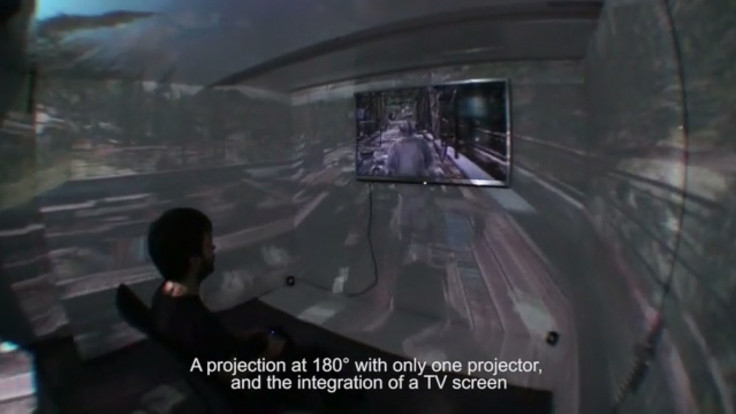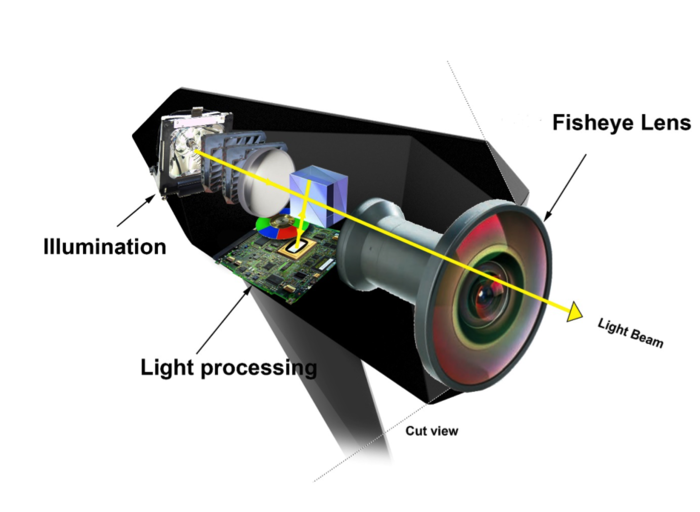Immersis: Virtual reality projector turns your room into 180-degree video game experience

French start-up company Catopsys and the Paris R&D arm of media agency Ogilvy have teamed up to create a projector that can be hooked up to your computer to project scenes from a virtual world around your room.

The Immersis projector features a single fish eye lens that is able to beam 180 degrees of virtual reality (VR) into a room, so that users can see images across the entirety of their vision that extend beyond a computer screen across the walls of the room.
The projector offers a full HD resolution of 1920 x 1080 and features HDMI / DVI video connectors.
Although the technology is designed to work on PCs, people can also integrate TVs, tablets and other computer monitors into the projection.
The creators say that their VR projector works by deforming a panoramic image based on multiple parameters – the 3D model of the space the images are to be projected onto, the user's point of view and the optical system used for example – and then projecting that image into the space in such a way that it looks as close to reality as possible.
"Gamers are used to having multi monitors when they play, especially with first person shooter games or car racing games," the creators write on their Kickstarter campaign page.
"Immersis allows [gamers] to keep their habits by focusing on one main screen (a TV screen) and extend the game scene with surrounding projection [like for example a] physical flight simulator cockpit."
The idea is interesting – rather than crowding around your friend's TV screen, more users can step back and enjoy playing and watching multiplayer or single player games as the field of vision is much wider, and therefore easier to see.
The creators are also offering an SDK so that game designers can get involved, and Immersis already supports game engines Unity 3D and Unreal Engine, as well as a universal plugin that can allow any video game or 3D application to work with the technology, with just a few simple tweaks by game developers.
Virtual reality is potentially the next big thing, but the industry is still trying to figure out how to make large-scale 3D holographic video displays that many people can experience at once.
At the moment, experiencing virtual reality is limited to putting on virtual reality goggles like Oculus Rift or Samsung Gear VR.
Holograms do exist, but the cost to render recorded video footage or 3D animations is extremely expensive, and the use of lasers to create holograms still risks damaging users' eyes.
There seems to be a lot of excitement already about Immersis, as high performance game chip manufacturer Nvidia has said it wants to help, and the crowdfunded campaign is now fully backed with 36 hours to go.
"Until now, VR was limited to artificial format. It was about immersing your mind into the format of a TV screen, or into a lonely and artificial journey of head-mounted displays," said Catopsys CEO and co-founder Daniel Duhautbout.
"But it [has] demonstrated that gamers would love to have more immersion."
© Copyright IBTimes 2025. All rights reserved.



















